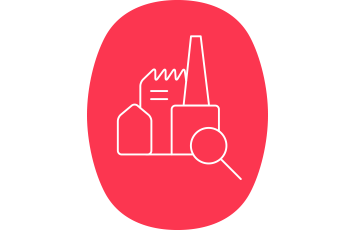
Inland waterways fast-track green transport
Battery and fuel cell usage is rapidly taking off in the inland navigation and small vessel segments. The participation of state and regional authorities in inland waterway networks means many innovative projects are now being fast-tracked.
The market for battery systems of Lithium type is becoming increasingly mature, with a growing number of vessels in operation or under construction. Fuel cells are also developing quickly.
Securing type approval before adoption
In both cases, battery ‘type approval’ remains a “must have” for products to gain widespread adoption.
Bureau Veritas is working hard to assist the shipping industry establish suitable rules and provide type approval certification. This is particularly important in cases where systems have not been specifically adapted for the marine environment.
Rules are now well established for batteries (both IEC standards and classification rules), and are being continually updated to incorporate new developments. Today, Bureau Veritas has a large number of batteries approved for use and continues to receive regular requests from manufacturers for new product approval.
Adapting fuel cells for use at sea
The fuel cell market is also developing rapidly, although the climate for type approval remains challenging.
In today’s market, Proton-Exchange Membrane fuel cells (PEMFC) remain the most common system, and currently offer a more proven experience than, for example, Solid Oxide fuel cells (SOFC).
The majority of these cells are not adapted for marine, and require significant support from Bureau Veritas to interpret the classification requirements for equipment approval and onboard installation. In particular, gas storage systems may present significant challenges.
Controlling developmental safety risks
To achieve this, Bureau Veritas is in continual dialogue with fuel cell manufacturers, including those in the automotive industry where fuel cells have a longer history.
In order to assist manufacturers in the development of products, Bureau Veritas is initially supporting makers with the main safety aspects of the fuel (risk of gas leakage, explosion). This enables manufacturers to move forward in their projects, and prepare the type approval certificate at a later stage.
The advantages of dual fuel cell-battery operation
Due to their limited power reach, fuel cells are deployed in tandem with a second source of onboard power, typically battery power in order to achieve a zero emissions output.
Because of the use of gas and its intrinsic characteristics, fuel cells are unable to withstand the load impact of activating/deactivating large auxiliary power consumers, and furthermore may create unacceptable onboard voltage and frequency variations (when AC current is used).
Achieving a reduced wait time in port
A combination of batteries and fuel cells resolves this issue, with the fuel cells delivering a continuous current which is used to supply the ship and/or charge the batteries. The batteries can deliver a high current in short time.
This combination also reduces time needed at port to recharge the batteries.
Staying ahead of the green curve
With public funding playing a significant role in inland waterway networks, many regions are now pushing ahead with pioneering fuel projects.
These will form a key part of Europe’s goal to make inland waterway transport a sustainable transport mode for the future.
Photo credit: by courtesy of ESCO










